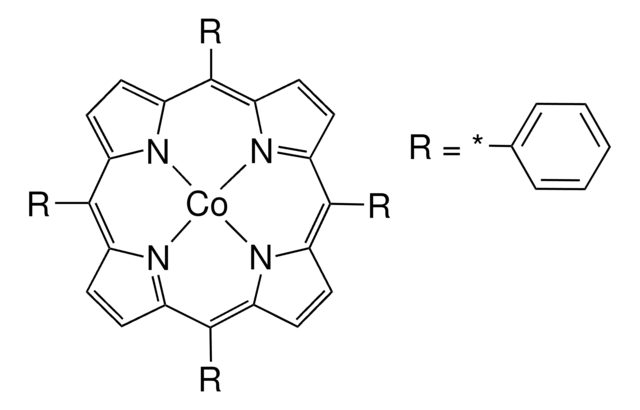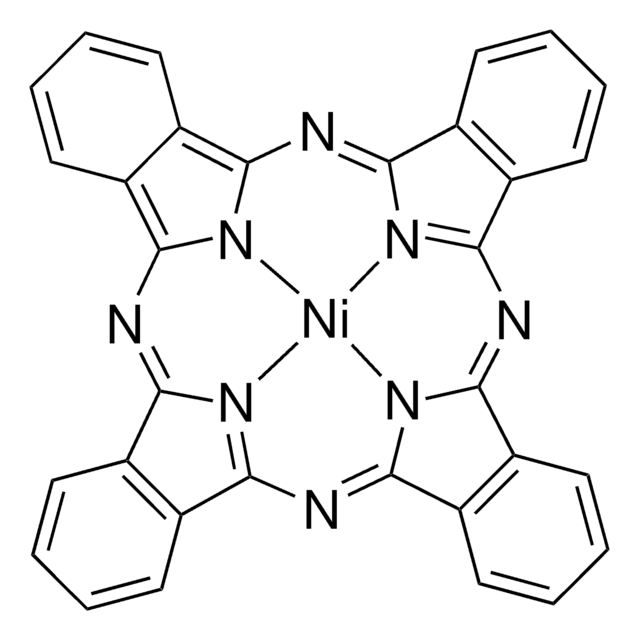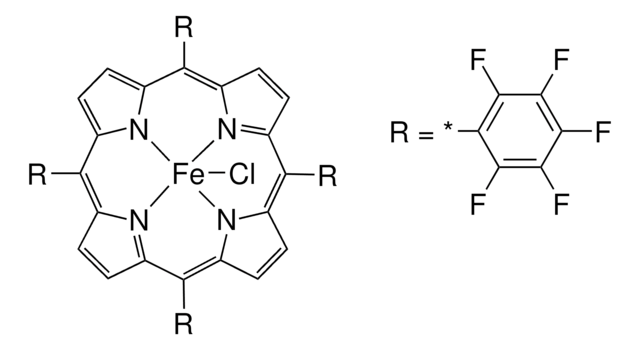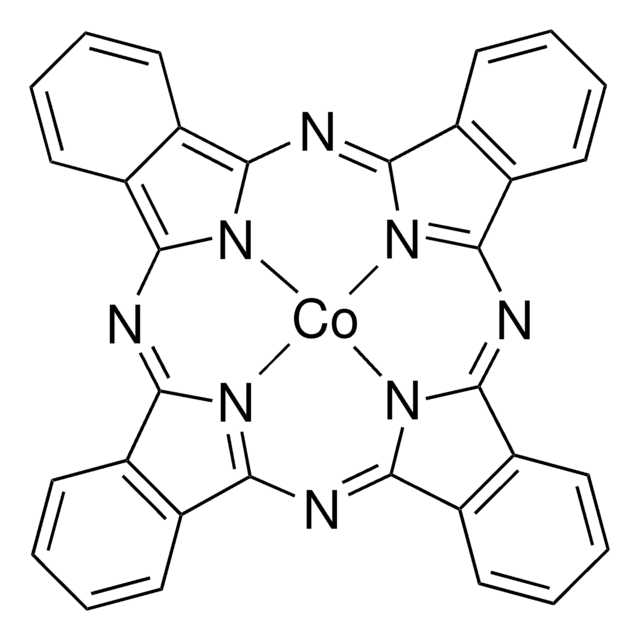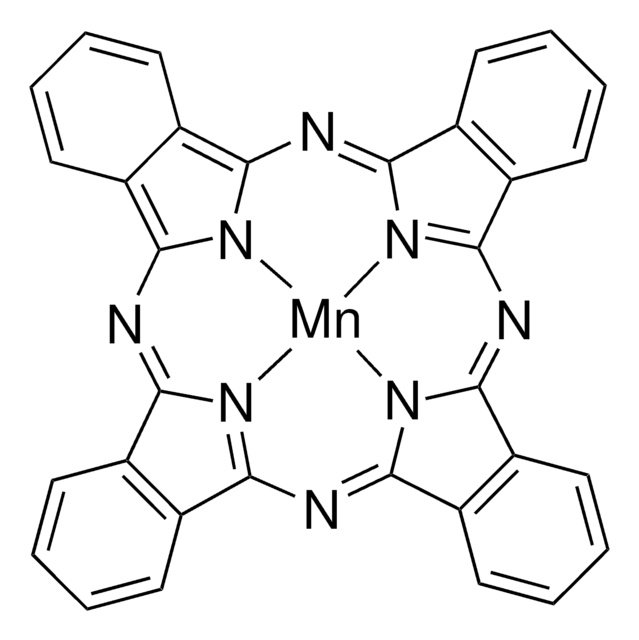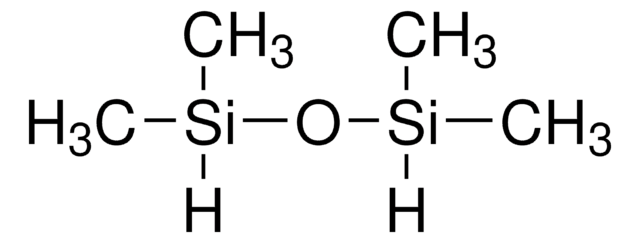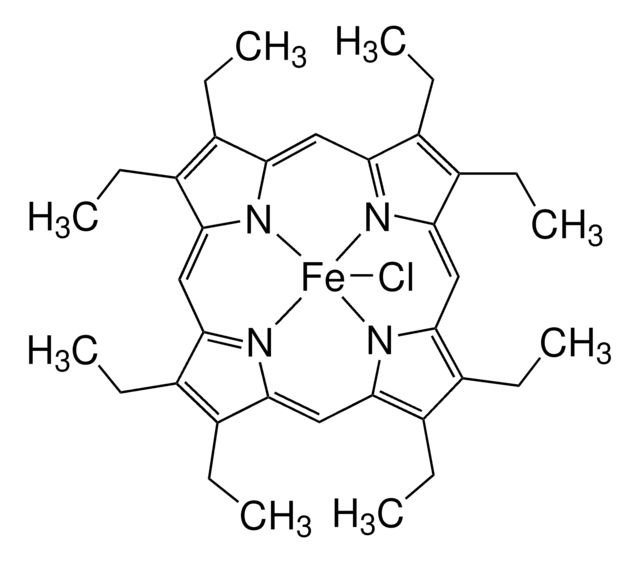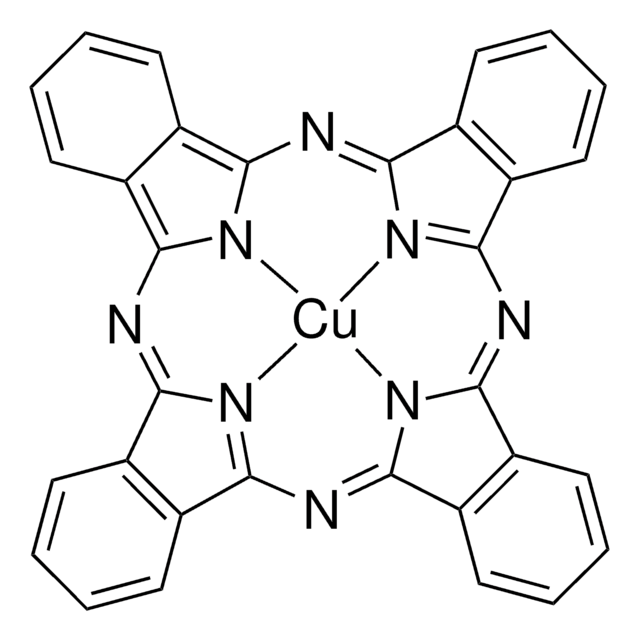379549
Iron(II) phthalocyanine
Dye content ~90 %
Synonym(s):
Phthalocyanine iron(II) salt
Sign Into View Organizational & Contract Pricing
All Photos(2)
About This Item
Empirical Formula (Hill Notation):
C32H16FeN8
CAS Number:
Molecular Weight:
568.37
EC Number:
MDL number:
UNSPSC Code:
12352103
PubChem Substance ID:
NACRES:
NA.23
Recommended Products
form
powder
Quality Level
composition
Dye content, ~90%
λmax
657 nm
SMILES string
[Fe]1n2c3nc4nc(nc5n1c(nc6nc(nc2c7ccccc37)c8ccccc68)c9ccccc59)c%10ccccc4%10
InChI
1S/C32H16N8.Fe/c1-2-10-18-17(9-1)25-33-26(18)38-28-21-13-5-6-14-22(21)30(35-28)40-32-24-16-8-7-15-23(24)31(36-32)39-29-20-12-4-3-11-19(20)27(34-29)37-25;/h1-16H;/q-2;+2
InChI key
MIINHRNQLVVCEW-UHFFFAOYSA-N
Storage Class Code
11 - Combustible Solids
WGK
WGK 3
Flash Point(F)
Not applicable
Flash Point(C)
Not applicable
Personal Protective Equipment
dust mask type N95 (US), Eyeshields, Gloves
Choose from one of the most recent versions:
Already Own This Product?
Find documentation for the products that you have recently purchased in the Document Library.
Customers Also Viewed
H Ozaki et al.
Biochimica et biophysica acta, 955(2), 220-230 (1988-07-20)
Reactions of nitrosobenzene, phenyl isocyanide and their ring-substituted analogues with hemoglobin, ferrous phthalocyanine and a synthetic model compound of hemoglobin were investigated by optical, 1H-NMR and infrared spectroscopy. Complexes of chelated ferromesoheme, the model compound, with 2-methyl-, 2-ethyl, 2-isopropyl- or
R F Parton et al.
Nature, 370(6490), 541-544 (1994-08-18)
Many attempts have been made to mimic the catalytic oxidative properties of the enzyme cytochrome P-450. For homogeneous systems the mechanisms of oxidation can be readily determined but proper mimicry of the protein environment is difficult to achieve. Heterogeneous mimics
Anton A Ciucu et al.
Biosensors & bioelectronics, 18(2-3), 303-310 (2002-12-18)
A new highly sensitive amperometric method for the detection of organophosphorus compounds has been developed. The method is based on a ferophthalocyanine chemically modified carbon paste electrode coupled with acetylcholinesterase and choline oxidase co-immobilized onto the surface of a dialysis
J Fukui et al.
Journal of the American Geriatrics Society, 38(8), 889-892 (1990-08-01)
The authors designed a new pad for urinary incontinence. It is composed of a cloth of acrylonitrile copper sulfide and another cloth of iron-phthalocyanine. In vitro experiments showed that acrylonitrile copper sulfide cloth inhibited the growth of most bacteria causing
Our team of scientists has experience in all areas of research including Life Science, Material Science, Chemical Synthesis, Chromatography, Analytical and many others.
Contact Technical Service
